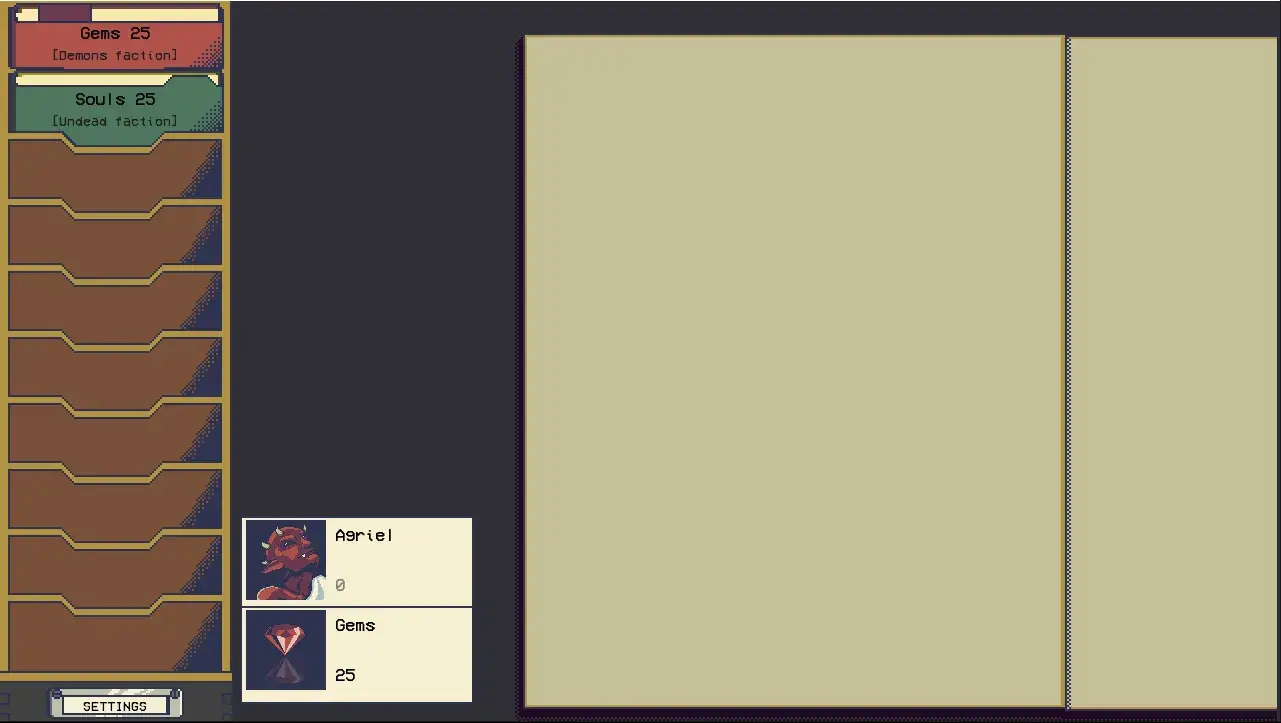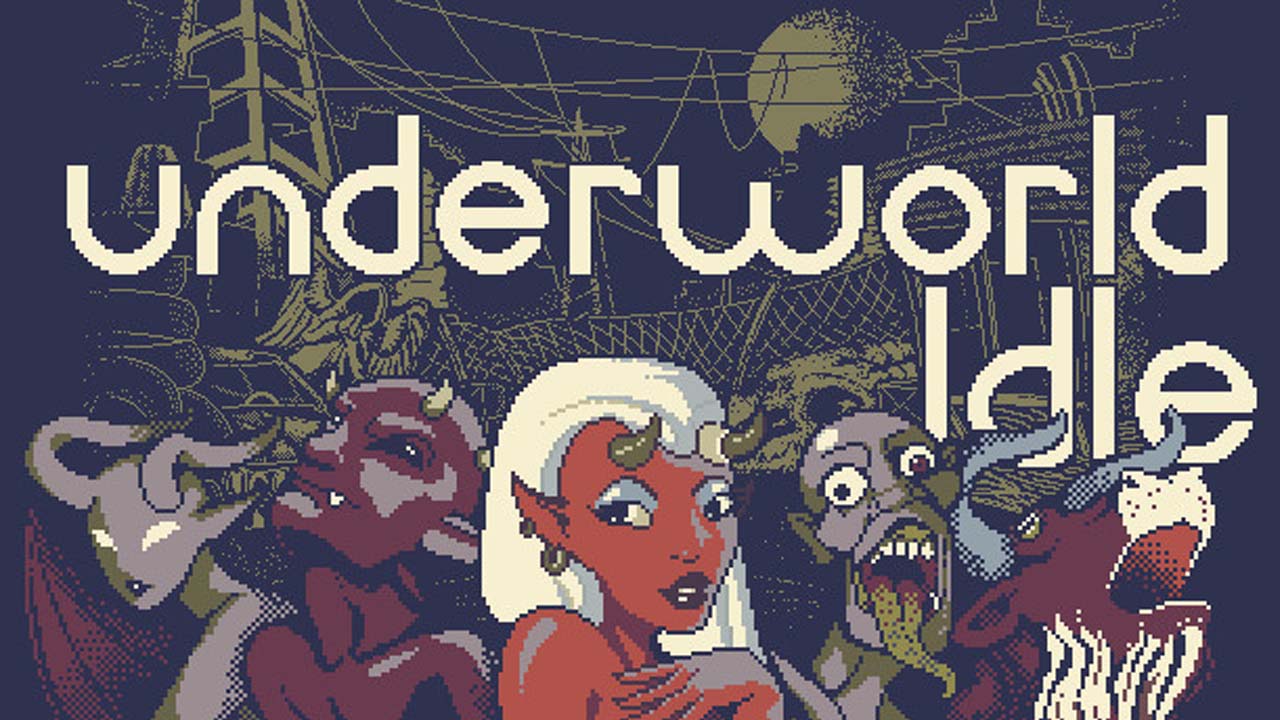This is a starter guide with the insights we gained after several game resets. It has several pieces of advice that must be known to play, and it covers information from 0 to the first reset.
Wstęp
This guide covers the basics until the first game reset. When you start this game, all you can do is purchase an Agriel. But you’ll need to know some things.
- Agriel, like every bottom character in every faction, is a resource producer.
- Agriel is the gem producer, and gems are for the Demon Faction.
- Ghoul is the soul producer, and souls are for the Undead faction.
- Leviathan is the raw mana producer, used by the Drowners Faction.
- Every other unit in the game, except for the bottom character in each faction, only produces the unit directly below them.
- Na przykład, a dandalion will produce Agriels.
To start the game and its fearsome upgrade spiral, you should use your starter gems and produce an Agriel, which will slowly start producing gems. When you get enough Agriels, you’ll be offered an update. And here is the trickiest part of the game.
The Interface

On the left side of the screen, you’ll see the Faction’s tabs. To the right of that, you’ll see a list of resources and units of that faction. To buy a creature, click on it and select “Create one.”
The next area to the right shows information about the current unit or resource selected and the final area opens up when you are ready for the first reset, with several options.
The Difficult Upgrades
In most idle games, you upgrade as soon as the upgrade appears. If you do that in Underworld Idle, you risk making the game more difficult because upgrades consume units.
Each upgrade doubles the power of the remaining units, Więc, as a general rule, wait till you have double the units needed to do an upgrade. Because if you upgrade as soon as the unit shows the asterisk (*) that indicates it’s ready for an upgrade, you’ll find yourself with almost no units of that type.
Później, when you start to understand how this works, you’ll notice a difference in each upgrade due to the speed at which each unit is being produced in relation to the required units for the upgrade. And if the speed is high enough, you can forget about doubles, upgrade and know that you’ll get back on track almost immediately.
Specials
Gems also get something that resembles an upgrade popping out every now and then. Instead of gems getting more powerful, what you get is the option of buying a Sphere of Fire and a Fire Skull. It’s not like you can select whichever you want, each has a price in Gems. Any Demon who has been upgraded at least once can be given a Sphere of Fire. A Fire Skull can be given to the undead that has at least one upgrade. These gems offer a 50% productivity increase, and you can give more than one to a single unit, though you get diminishing returns.
Souls have a similar mechanism. They offer Rotten Doll and Altar of the Soul. The Rotten Doll gives waste, and each time you buy one, the next one gives a little more waste. The Altar of Souls adds decimals to the soul cost, letting it drop lower and lower for units that have a higher unit above them.
Energia
The energy starts at zero and remains that way till you get enough gems to unlock the first button. Each button offers a different option, and the energy they require will get replenished slowly over time. You’ll also get energy every time you unlock a new button. The buttons are all either percentage-based or scale up as you grow in power, so they are always useful.
The fifth button has a mechanic for unlocking the Warlock faction, but you won’t get access to that in the first game reset, and you’ll probably need several resets till it gets good enough to get all the necessary resources, so don’t worry about it for now.
Unit Requirements
You’ll start the game with Demon units that require gems and souls, and you’ll soon realize that higher units not only produce lower units, they also require lower units to buy. It’s not as big of a problem as upgrades, as you are producing higher units that will produce more of the same lower units they require. You’ll also see that as you get higher units, the soul cost of the lower unit is decreased. This helps in getting more cheaply priced units to buy even higher units. This is a mechanic that you’ll love later in the game.
It should be noted that as you get higher and higher units of a faction, it makes no sense to buy the lowest units anymore, as the amount you’ll get is not significant to alter the game. So you’ll start to control the number of lower units by getting more of the highest units that cascade production down.
After you pass the threshold of the first undead, which produces souls, you’ll notice that it requires Gems and Souls, but also Raw Mana. Masz 150 Raw Mana, so you’ll be able to get some ghouls to produce more souls.
It gets trickier for the Drowners faction, as they require Gems and Souls, but also Waste. And waste is not a product of your units. Zamiast, you’ll need to go to the Waste tab. That’ll direct you to the Junkyard. Here you’ll find some options for getting waste by sacrificing Gems, Dusze, or Raw Mana, but only after you pass each required amount. You’ll also be able to get some waste by special upgrades of souls, but not in a continuous way.
W końcu, waste can also be found when you reset the game.
The Junkyard and Offline Time
In the junkyard tab, you’ll also find the daily junkyard search and the monetizing options of the game. The daily option is not really daily. Each time you use it, it’ll take 24 hours from that moment to activate again, so that option is always shifting in time. The good news is that it also counts the time you are not playing the game.
That takes us to the most particular aspect of this idle game. Offline time counts only for three things.
- The daily junkyard timer
- Energy recharge
- Waste retrieval
I find it funny that the game does not give us any gems, dusze, or raw magic, but the most limiting resources: The energy that you have no way of controlling speed and the waste that’s difficult to get.
The junkyard also lets us collect three scarce resources, a part of the monetization of the game. Every daily search can give us some Tokens, Bateria, or Gear. Tokens are a way of getting more Battery or Gear, and besides the ones in the daily search, you can buy more with money. Batteries are used to replenish Energy for the buttons, and Gears are a permanent upgrade for the unit that gets assigned one that remains between resets.
Resetting the Game
When you go to the Junkyard (the Waste tab), you’ll see that, besides waste, each gem sacrifice gives Hell Ashes. When you reach 75 Hell Ashes, you’ll be able to go to the Demon Faction, and then go to the new option that appears, the Boiler Room. You’ll also notice that there’s another new tab, called Contracts. Demon Contracts require prestige and are permanent upgrades for the game.
To get prestige, you blow up the boiler, and it will say exactly what you’ll get. In the Demon’s case, you’ll get waste and prestige. The more Hell Ash you have, the better the rewards are. When you blow up the boiler, the game starts again, but this time the Boiler Room will be open with two boiler options and you’ll be able to use prestige to get some contracts.
Each contract offers a different game modification, and even a different number of levels you can get. Więc, get your contracts and then purchase your first Agriel again.
To wszystko, co dzisiaj udostępniamy w tym celu Underworld Idle przewodnik. Ten przewodnik został pierwotnie stworzony i napisany przez gedece. Na wypadek, gdybyśmy nie zaktualizowali tego przewodnika, możesz znaleźć najnowszą aktualizację, postępując zgodnie z tym połączyć.
